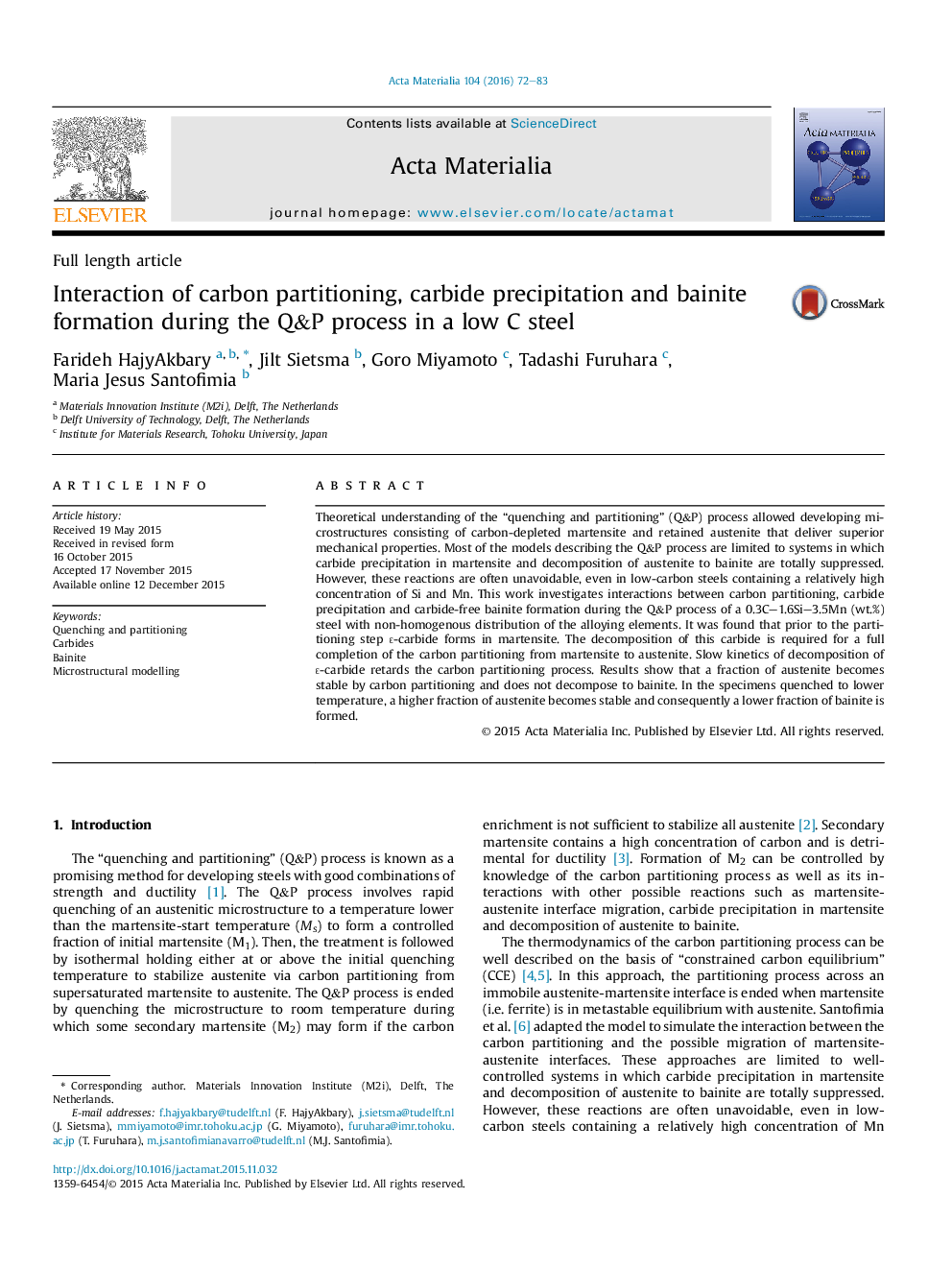| Article ID | Journal | Published Year | Pages | File Type |
|---|---|---|---|---|
| 1445147 | Acta Materialia | 2016 | 12 Pages |
Theoretical understanding of the “quenching and partitioning” (Q&P) process allowed developing microstructures consisting of carbon-depleted martensite and retained austenite that deliver superior mechanical properties. Most of the models describing the Q&P process are limited to systems in which carbide precipitation in martensite and decomposition of austenite to bainite are totally suppressed. However, these reactions are often unavoidable, even in low-carbon steels containing a relatively high concentration of Si and Mn. This work investigates interactions between carbon partitioning, carbide precipitation and carbide-free bainite formation during the Q&P process of a 0.3C–1.6Si–3.5Mn (wt.%) steel with non-homogenous distribution of the alloying elements. It was found that prior to the partitioning step ɛ-carbide forms in martensite. The decomposition of this carbide is required for a full completion of the carbon partitioning from martensite to austenite. Slow kinetics of decomposition of ɛ-carbide retards the carbon partitioning process. Results show that a fraction of austenite becomes stable by carbon partitioning and does not decompose to bainite. In the specimens quenched to lower temperature, a higher fraction of austenite becomes stable and consequently a lower fraction of bainite is formed.
